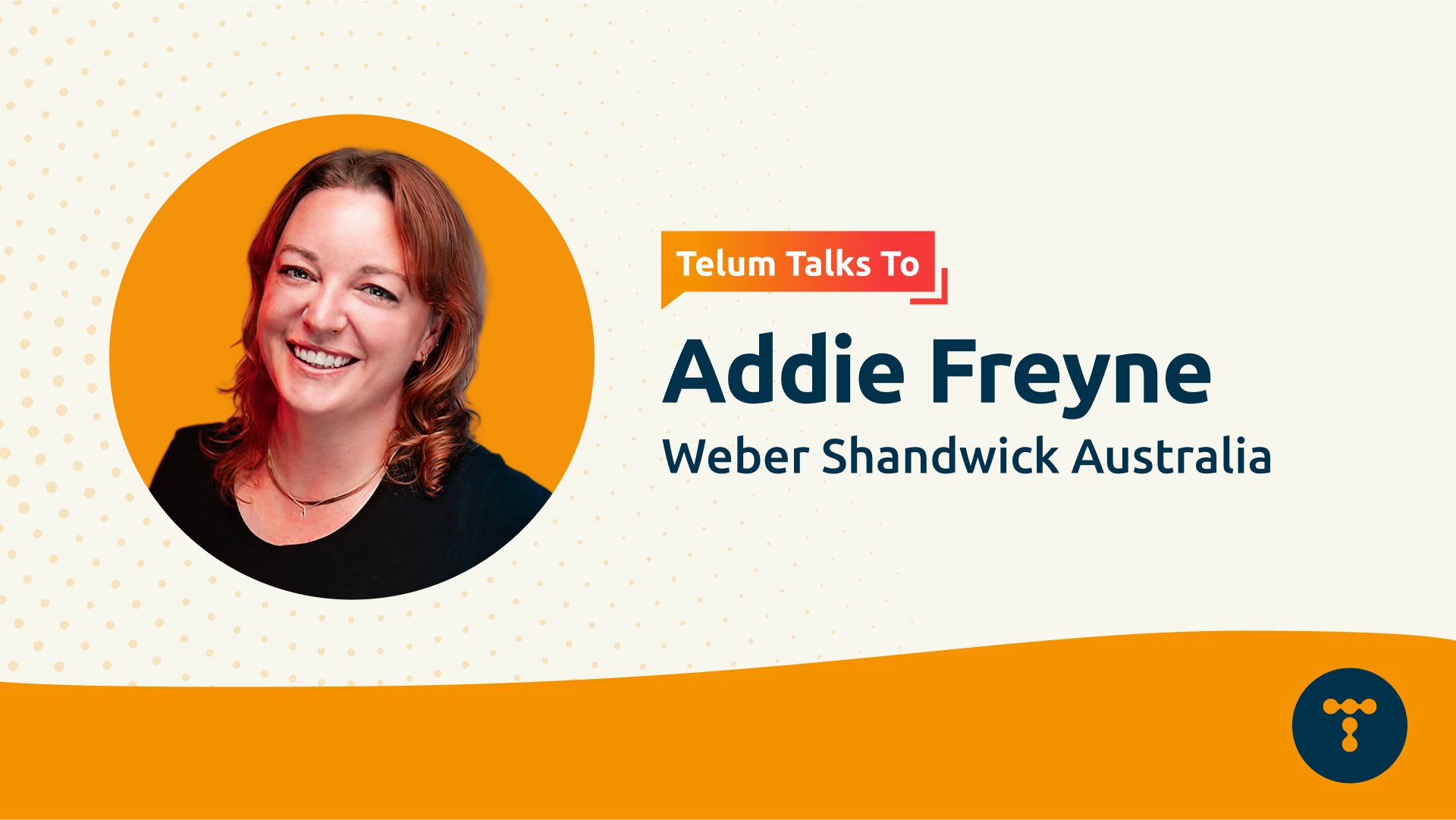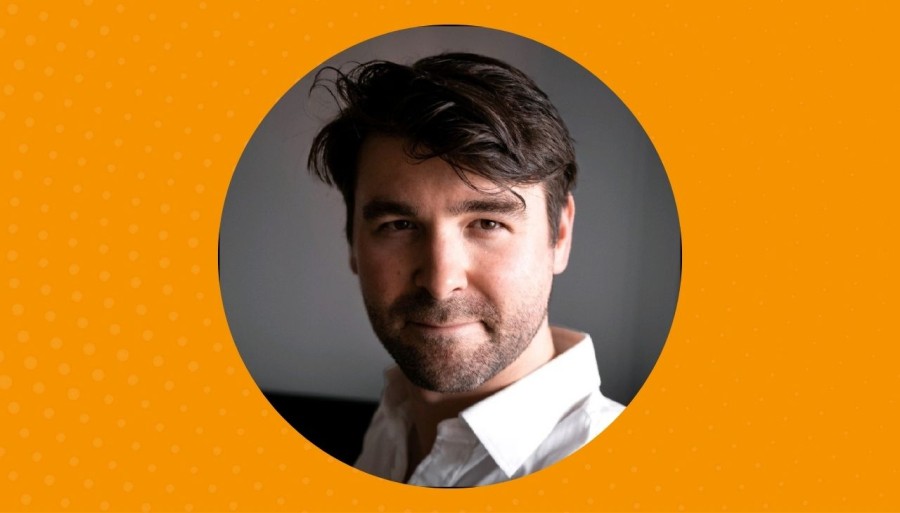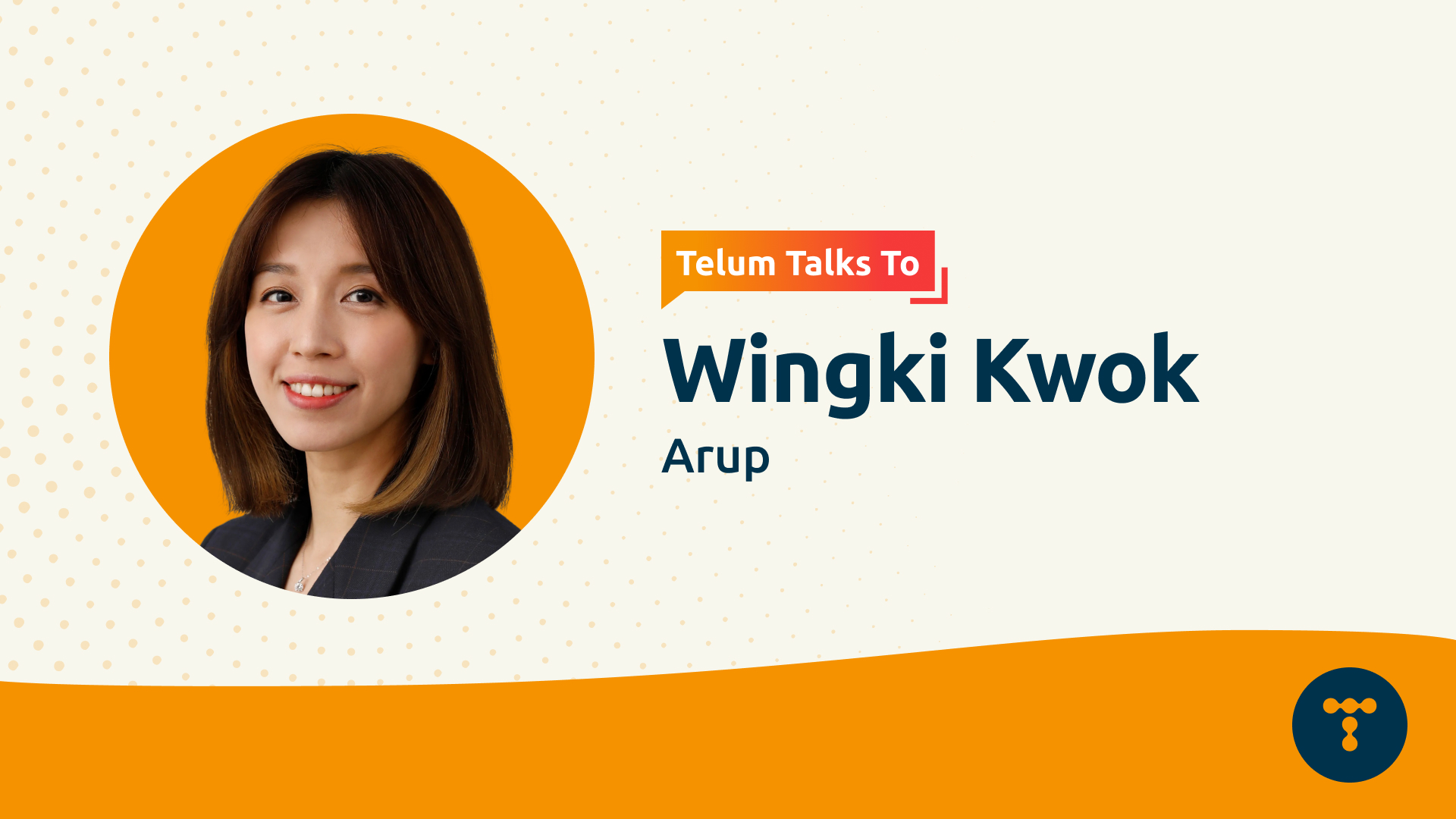In today's ever-changing earned media landscape, it's no longer just about where your story lands - it's about how it drives engagement, sparks conversation, and builds trust and authenticity.
Telum Media spoke to Addie Freyne, Director of Earned Creative Strategy at Weber Shandwick Australia, on the shift in earned media. She has spent the past decade leading various brands across tech, consumer, corporate and B2B, with experience spanning issues management, content marketing, and integrated communications.
Addie shares why communications professionals must combine strategic insight with critical thinking and a robust measurement framework to thrive and navigate in this complex field.
How would you define earned media today, and how has that definition evolved over the past five or ten years?
In my opinion, everything is earned. For a long time, "earned" was shorthand for traditional press coverage. Then over the past few years, the industry has expanded the definition to include other channels like social, podcasts and even user-generated content.
But the reality is we have to break out of channel-based thinking. Earned isn't about where your story lands - it's about whether it cuts through, sparks conversation, and drives real engagement. The measure of success is resonance, not placement.
The real secret (that some PRs are still wrestling with) is that while you might have a killer idea that is earned at the core, the execution needs to be integrated. We all acknowledge that audiences are more fragmented than ever. This means that if earned is the spark that ignites curiosity - paid, owned, and shared channels are what fuels a lasting fire. When these elements work together, we don't just capture attention, but we build movements, foster communities, and create impact that endures.
How have client expectations of earned media changed and how much more are brands demanding from earned campaigns today?
Earned has never had to work so hard. Trust, reputation and authenticity have never been more important or harder to manage. This is great for our industry as it brings communications back into the room with business strategy. However, this also means that we have to raise the bar when it comes to demonstrating tangible results with clear metrics that show how campaigns contribute to brand reputation and revenue.
Measurement and analysis aren't just for reporting, they're also essential tools for real-time mid-campaign optimisation. You can't just set and forget. Clients expect us to be part consultant, part air-traffic controller and ready to pivot at a moment's notice if the wind changes. Establishing strong benchmarks and a robust measurement framework makes this level of nimbleness possible.
The tools we have today would have blown my mind when I started my career. Gut feel and educated guesses don't cut it anymore because instant, data-driven decisions are now a reality. Our USP as PRs is combining these insights with our deep understanding of our client's brand and what's happening in culture, so that we can turn information into action.
In response to these changes, how has Weber Shandwick rethought roles or team structures to reflect a more integrated, strategy-led approach to earned media?
I firmly believe that every PR professional should be a strategist at heart. Critical thinking is the backbone of our work and should be woven into the fabric of every account and campaign. PR moves too fast for us to huddle with a strategy team every time a decision needs to be made.
But let's be honest, we are the Swiss Army knives of the business world, juggling an endless array of hats, often all at the same time. Between wrangling influencer contracts and pitching exclusives to the AFR, who really has time to dive deep into data and unearth novel insights on a daily basis?
That's why we're building a dedicated team to do exactly that: bring the deep thinking, robust tools, and sharp measurement our clients need. It also delivers an extra shot of strategic firepower that helps our team deliver even more impactful results.
For someone starting out in PR, what advice would you give on navigating this increasingly blurred media landscape?
Honestly, my best advice is to try everything. Have an open mind and explore every part of PR before you decide to niche down too early. All of it is good experience, even if you realise it's not for you. I had no idea what I wanted to do or what I was passionate about when I started out, but all the skills I've gained over the years from working in a wide range of industries, specialisms and sizes of companies have given me the opportunity to curate a role that is perfectly suited for me.
Understanding what your clients care about is crucial. Some advice I got recently that is so simple but makes this very easy, is to train your social algorithms to surface content that aligns with the brands and industries you want to work in. That way, you are constantly seeing relevant news and viral trends that might not naturally appear on your for you page.
And never underestimate the value of real relationships - with journalists, influencers, and your peers - still to this day, the ability to build connections is what sets great PRs apart from the rest.
Looking ahead, what do you think will define the next phase of earned media's evolution?
I think the future of earned looks even more decentralised and (delightfully) chaotic. Expect more misinformation, shorter attention spans, and a wild stampede toward quantity over quality.
Influence won't be controlled by a handful of gatekeepers. It'll be scattered across hyper-niche communities, encrypted group chats, private networks, and even AI-generated voices that sound suspiciously like someone you know.
Credibility and connection will matter more than ever: it's not just about what's said, but who says it, why they're trusted, and how their influence ripples through communities.
PR teams will need to become experts in guiding brands through this noisy, confusing and ever-shifting landscape.
Understandably, a lot of people are wary about AI's impact on the industry, but I say embrace the inevitable. Befriend the robots and use them to sharpen your skills. Our real value lies in judgement, intuition, and understanding cultural context - skills no algorithm can fake.
That's the future of earned: right at the intersection of meaning, community, and trust.

Feature
Telum Talks To: Addie Freyne, Director of Earned Creative Strategy at Weber Shandwick Australia
by Telum Media
20 July 2025 4:00 PM
6 mins read
Telum Media creating connections
Get in touch to learn more
You might also enjoy
Industry update
The International Association of Business Communicators - Asia Pacific Region (IABC APAC) has announced the recipients of the Communicator of the Year Awards 2025.
Syed Mohammed Idid, General Manager of Strategic Communications and Stakeholder Engagement at West Coast Expressway (WCE) Malaysia, has emerged as the winner in the Senior Communication Professional of the Year category. Donald Lim, Chief Operating Officer of DITO CME Holdings Corporation in the Philippines, has been crowned winner in the Executive Leader category.
IABC APAC Chair, Barbara Pesel, said, "Donald and Syed exemplify the inspiring qualities, exceptional expertise, and significant influence we deeply admire and strive to emulate within IABC APAC. They are true case studies of success, offering lessons we can all learn from."
12 November 2025 8:10 AM
1 min read
Moves
Tom Furley has joined the Energy Efficiency and Conservation Authority (EECA) as Senior Communications Advisor. He has moved from the New Zealand Green Building Council (NZGBC) after six years, where he was last Senior Strategic Communication Advisor. Prior to this, Tom was at Radio New Zealand.
12 November 2025 4:28 AM
1 min read
Feature
As cities evolve and communities grow, the way we think about urban development has transformed to meet modern needs and navigate risks and opportunities. Modern placemaking, a growing field in urban development, goes beyond architectural design and urban planning. It extends to focus on creating meaningful spaces that resonate with communities while meeting contemporary challenges such as climate change and competition for space.
Wingki Kwok, Head of Public Relations and Engagement from ARUP shared how storytelling and community engagement shape placemaking projects, from conceptualisation to implementation.
Placemaking and place branding have become increasingly common in urban development conversations. How have these concepts taken shape in Hong Kong, and what role does communications play in bringing them to life?
Urban development jargons can be confusing. Terms like placemaking, place branding, city marketing often seem interchangeable, but each serves a distinct purpose.
To put it simply, place branding is a strategic marketing approach for a location. As a city, Hong Kong has made significant efforts to promote a global image, aiming to attract international business and tourists. Place branding can also be applied at the district level. Projects like Energizing Kowloon East and Kai Tak Fantasy are great examples. With the Northern Metropolis on the horizon, we’re seeing place branding being used not only to attract investment, but also to draw in new residents and talent.
Placemaking, on the other hand, focuses on shaping public spaces to improve community well-being. Notably, good placemaking often contributes to the place brand, naturally strengthening the overall identity of a place.
But here’s the thing: place branding isn’t like selling a product. You can't declare a city welcoming and vibrant without friendly people and infrastructure that supports diverse communities. Similarly, claims of sustainability fall flat without green spaces and proper waste management. The brand must reflect authentic experiences shaped by people, culture, cityscape, history, and economic activities.
That’s where communications come in, and its role is twofold: first, it helps build the brand or place through engagement, collaboration and storytelling, and second, it tells the story to the world. These are not things you can achieve with just a single campaign. When I trained with the International Place Branding Association, one key takeaway was that a successful place brand isn’t something you invent on the spot and never look back, but something you discover and nurture over time. Making a meaningful place requires more than slapping on a logo or tagline; those are merely finishing touches.
What’s the key to good storytelling for a placemaking project, while staying true to your company’s values?
At Arup, our approach to placemaking revolves around capturing the essence of a community and translating that into design solutions that enhance public spaces and improve the quality of life.
The best stories that communicate this approach are always based on voices that reflect the authenticity of a place. Whether it’s place branding or placemaking, the people of the place make for the most powerful stories. It could be a local resident who’s lived in the area for decades, a small business owner who’s shaped the local economy, or a young athlete who proudly represents their district. Their voices bring depth and credibility to our storytelling, and good stories demands collective effort. Therefore, we need to dig out authentic stories and empower storytellers through engagement.
A core part of your current role focuses on public engagement. What does community engagement for a placemaking project look like, and why is it important?
Community and stakeholder engagement are not simply boxes to tick off but fundamental in building a shared vision. We believe that any placemaking or branding strategy must be grounded in deep understanding – something impossible to achieve from behind a desk. You have to go out, speak to people, listen to their stories, and understand their aspirations.
I'm currently working on a placemaking project at San Tin Technopole, where we're exploring ways to enhance village public spaces and promote urban-rural integration. Naturally, the first step is to talk to the residents, but urban-rural integration is a broad and sometimes abstract concept, and people can interpret it in very different ways.
Instead of jumping straight into asking 'What do you like?', we focused first on building a shared understanding around some core principles. It’s much more meaningful when we work together toward a higher common goal that also brings tangible benefits to the local community.
Trust-building, fostering a sense of ownership, and participation are key in this process. When people feel they’ve had a hand in shaping their environment, they’re more open to collaboration and more invested in the outcome. That’s why we focus so much on inclusive engagement to bring in diverse voices and make sure everyone feels heard – to make placemaking truly impactful.
How do you come up with communication strategies for placemaking developments that typically span several years, particularly given the potential for shifts in market conditions and public interest?
When developing long-term placemaking projects, communication strategies need to balance ambition with practical considerations.
We begin by mapping out stakeholders to understand the full spectrum of interests and influences. For placemaking and place branding, the local community usually carries the most weight, followed by other actors who will drive implementation.
One thing I’ve learned is that people are great at telling you what they want, but not always why. When dealing with various stakeholders, you can’t design based on preferences alone, you need to get to the bottom of what is driving the views they hold. Asking the right questions, setting the scene carefully, and preparing for conflicting views are all means to achieve this end, as well as ensuring that developments do not waver under external pressures.
Placemaking through co-creation helps build ownership, and the results are often tangible, with visible changes in the environment that reflect the community’s input. These outcomes also feed back into the place brand, reinforcing its authentic identity.
How do you see sustainability and ESG messaging impacting public perception of a placemaking project?
ESG is gaining more visibility in project communications, and I think that’s a really positive shift. It serves as a reminder of the values we want to bring to the audience, and more importantly, it helps people understand and feel more connected to the spaces being developed by showing how a project contributes to environmental and social benefits.
12 November 2025 1:43 AM
6 mins read


